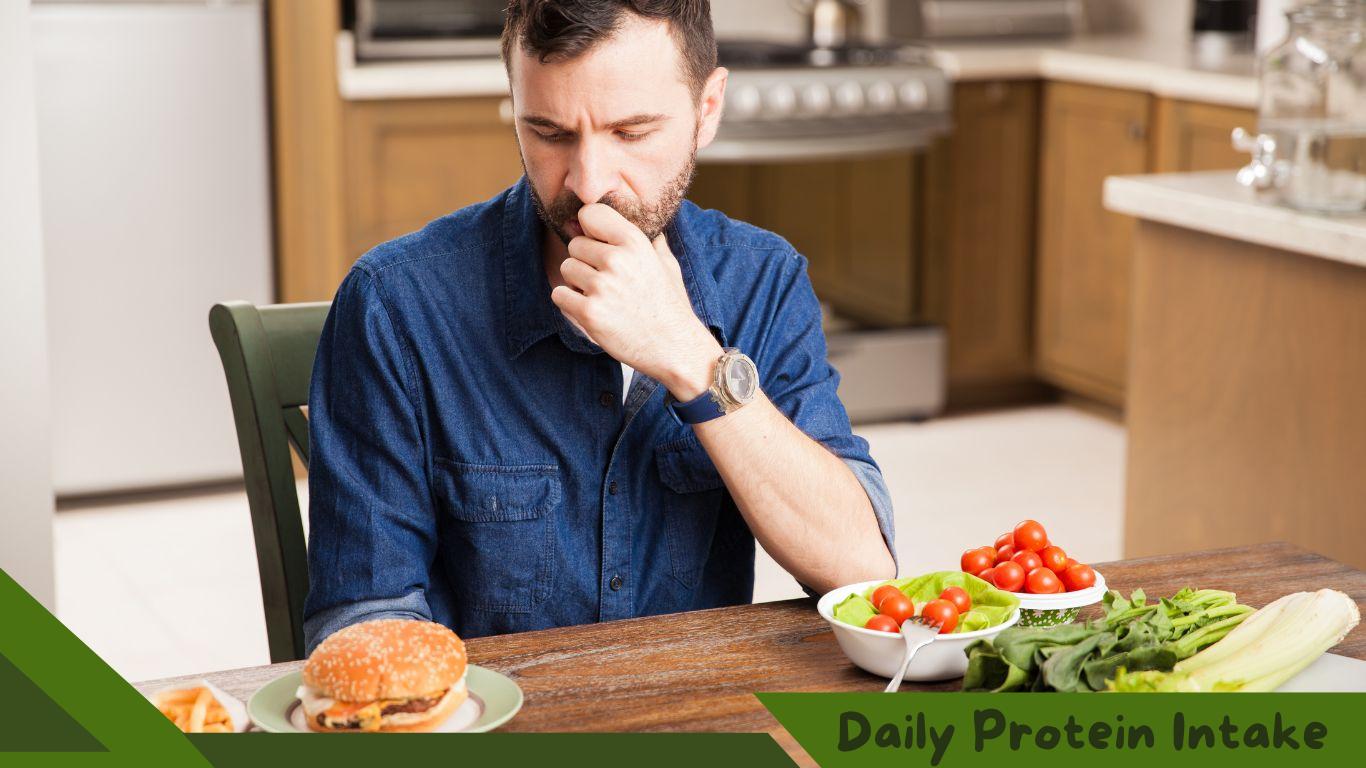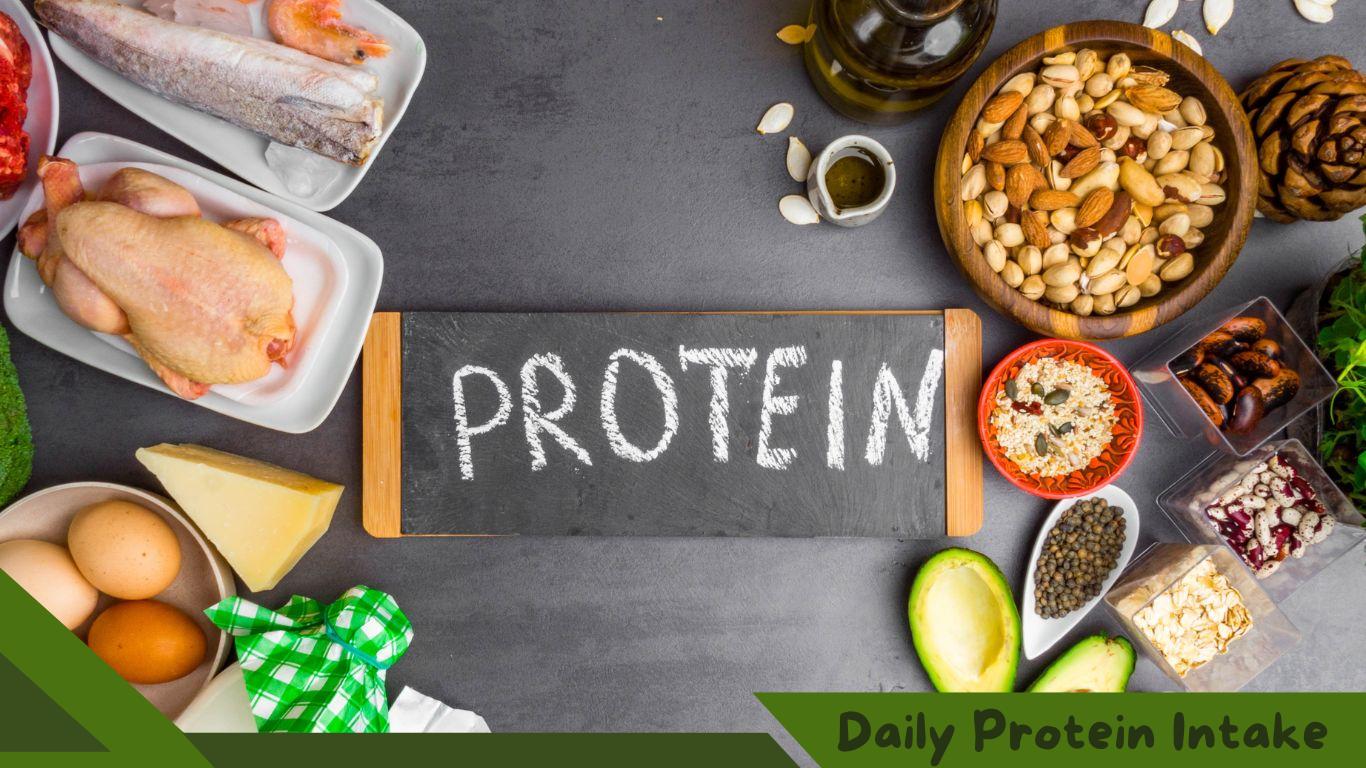What Should I Eat for 100 Grams of Protein? A Visual Guide

Protein is important for our health. It’s a type of nutrient that we need to stay well. Many people call it the building block of life. It helps with many things in the body, like growing muscles, fixing tissue, making enzymes, and creating hormones. To get enough protein, eat a mix of different protein-rich foods in a balanced diet. This article will show you ways to get 100 grams of protein daily. We’ll discuss different protein sources and suggest meals that include them.
Understanding Protein and its Importance
Proteins are made of amino acids. These building blocks help the body grow and repair tissues. The body needs nine important amino acids for good health. They can’t be made by the body, so we must get them from our food. Protein is essential for maintaining and repairing muscles, organs, skin, hair, and nails. Also, it is important for making enzymes, hormones, and antibodies.
Daily Protein Requirement
Protein needs change based on age, gender, how active you are, and how healthy you are. The RDA for protein is 0.8 grams per kilogram of body weight. Some people need more protein than others. This includes athletes, people who work out a lot, pregnant women, and people who are healing from injuries. You should get 10-35% of your daily calories from protein.
Factors Affecting Protein Needs
Several factors can influence an individual’s protein needs. These include:
- Activity Level: Those who engage in regular exercise or have physically demanding jobs may require more protein to support muscle repair and growth.
- Age: Older adults may need more protein to counteract age-related muscle loss.
- Body Composition: People with higher muscle mass generally require more protein to maintain their lean body mass.
- Pregnancy and Lactation: Protein needs to increase during pregnancy and breastfeeding to support the growth and development of the fetus or infant.
Protein Sources and their Protein Content
Protein can be derived from both animal and plant sources. Animal-based protein sources provide all essential amino acids, making them complete proteins. However, vegetarian proteins may not have all the essential amino acids needed. They can still help meet protein requirements.
Animal-Based Protein Sources
Animal-based protein sources include:
- Lean meats such as chicken, turkey, beef, and pork.
- Fish and seafood such as salmon, tuna, shrimp, and cod.
- Eggs, which are an affordable and versatile source of protein.
- Dairy products such as milk, yogurt, and cheese.
Plant-Based Protein Sources
Plant-based protein sources include:
- Legumes such as lentils, chickpeas, black beans, and edamame.
- Soy products like tofu, tempeh, and soy milk.
- Nuts and seeds such as almonds, walnuts, chia seeds, and flaxseeds.
- Whole grains like quinoa, brown rice, and oats.
Calculating Protein Intake for 100 grams
To get 100 grams of protein in your diet daily, you must eat protein-rich foods in your meals. Let’s explore some options for both animal-based and plant-based protein sources.

Animal-Based Protein Options
- Grilled chicken breast: A 3-ounce serving of grilled chicken breast contains approximately 26 grams of protein.
- Salmon fillet: A 3-ounce serving of salmon provides around 22 grams of protein.
- Greek yogurt: One cup of Greek yogurt offers about 20 grams of protein.
- Cottage cheese: Half a cup of cottage cheese contains around 14 grams of protein.
- Eggs: Two large eggs contribute approximately 12 grams of protein.
Plant-Based Protein Options
- Lentils: One cup of cooked lentils provides approximately 18 grams of protein.
- Quinoa: A cooked cup of quinoa offers around 8 grams of protein.
- Tofu: A 3-ounce serving of tofu contains approximately 8 grams of protein.
- Almonds: A quarter cup of almonds provides around 7 grams of protein.
- Chickpeas: One cup of cooked chickpeas contributes approximately 15 grams of protein.
Meal Ideas to Achieve 100 Grams of Protein
Now that we have explored various protein sources, let’s put together some meal ideas to help you reach your goal of consuming 100 grams of protein in a day.
Animal-Based Meal Ideas
- Breakfast: Scrambled eggs with spinach and feta cheese, accompanied by a side of Greek yogurt.
- Lunch: Grilled chicken breast salad with mixed greens, cherry tomatoes, cucumbers, and a sprinkle of almonds.
- Snack: Cottage cheese topped with sliced strawberries and a drizzle of honey.
- Dinner: Baked salmon fillet with roasted Brussels sprouts and quinoa.
- What Are 9 Foods High in Protein? That Actually Works.
- Evening Snack: Hard-boiled eggs paired with carrot sticks and hummus.
Plant-Based Meal Ideas
- Breakfast: Quinoa breakfast bowl with cooked quinoa, almond milk, mixed berries, and a dollop of almond butter.
- Lunch: Lentil soup with a side of whole grain bread and a green salad topped with chickpeas.
- Snack: Tofu skewers marinated in a teriyaki sauce, paired with roasted edamame.
- Dinner: Stir-fried tofu and vegetable medley served over brown rice.
- Evening Snack: A handful of roasted almonds and a small serving of hummus with carrot sticks.
Balancing Protein with Other Nutrients
Protein is vital, but you need a balanced diet with carbs, fats, and micronutrients too. Here are some tips on balancing protein with other nutrients:
Carbohydrates
Carbohydrates provide energy and should be incorporated into your meals along with protein. Opt for complex carbohydrates like whole grains, fruits, and vegetables. These provide fiber and essential vitamins and minerals.
Fats
Include healthy fats from sources like avocados, olive oil, nuts, and seeds. Fats are important for nutrient absorption and hormone production. However, it’s essential to consume them in moderation.
Micronutrients
Vary your food choices to ensure you receive a wide range of vitamins and minerals. “Add colorful fruits and vegetables to your diet. They have important nutrients and antioxidants.”Additionally, consider incorporating sources of calcium, iron, and vitamin B12 into your diet.
Tips for Achieving Protein Goals
Here are some helpful tips to assist you in achieving your daily protein goals:
- Plan your meals: Take some time to plan your meals in advance, ensuring that they include adequate protein sources.
- Prioritize protein-rich foods: Make protein a focal point of your meals and build your plate around it.
- Snack wisely: Choose protein-rich snacks such as Greek yogurt, cottage cheese, or a handful of nuts to keep you satiated between meals.
- Experiment with plant-based proteins: If you follow a vegetarian or vegan diet, explore different plant-based protein sources to add variety to your meals.
- Consider protein supplements: If necessary, you can supplement your protein intake with protein powders or bars. However, it’s always best to obtain nutrients from whole foods whenever possible.
Remember, it’s important to consult with a healthcare professional or registered dietitian to determine your specific protein needs based on your individual circumstances and health goals.
Conclusion:
Meeting your protein needs is essential for overall health and well-being. To reach your daily 100-gram protein goal, learn about protein sources, calculate what you need, and add them to balanced meals. Make sure to eat different types of protein from both plants and animals to get all the nutrients you need. You can eat a healthy and varied diet that’s high in protein if you plan your meals carefully and make good choices.
FAQs:
Q: Can I consume too much protein?
Protein is necessary, but too much can damage your kidneys and harm your health. Consult a healthcare professional to know how much protein you need.
Q: Are plant-based proteins as effective as animal-based proteins?
A: Yes, plant-based proteins can provide all essential amino acids when combined properly. You can get enough protein by eating many different plants.
Q: Can I meet my protein needs through supplements alone?
A: It’s always best to obtain nutrients from whole foods. However, in certain cases, protein supplements can be used to supplement dietary intake. Consult a healthcare professional for personalized advice.
Q: How can I ensure I’m getting enough protein as a vegetarian or vegan?
If you are a vegetarian or vegan, get your protein from plants like legumes, tofu, tempeh, and quinoa. Combining different plant-based protein sources throughout the day can help meet your needs.
Q: Are there any risks associated with a high-protein diet?
High-protein diets can cause nutrient imbalances if you don’t also eat foods from other groups. Keeping a balanced diet is crucial. Don’t forget to ask a healthcare professional for personalized advice.




